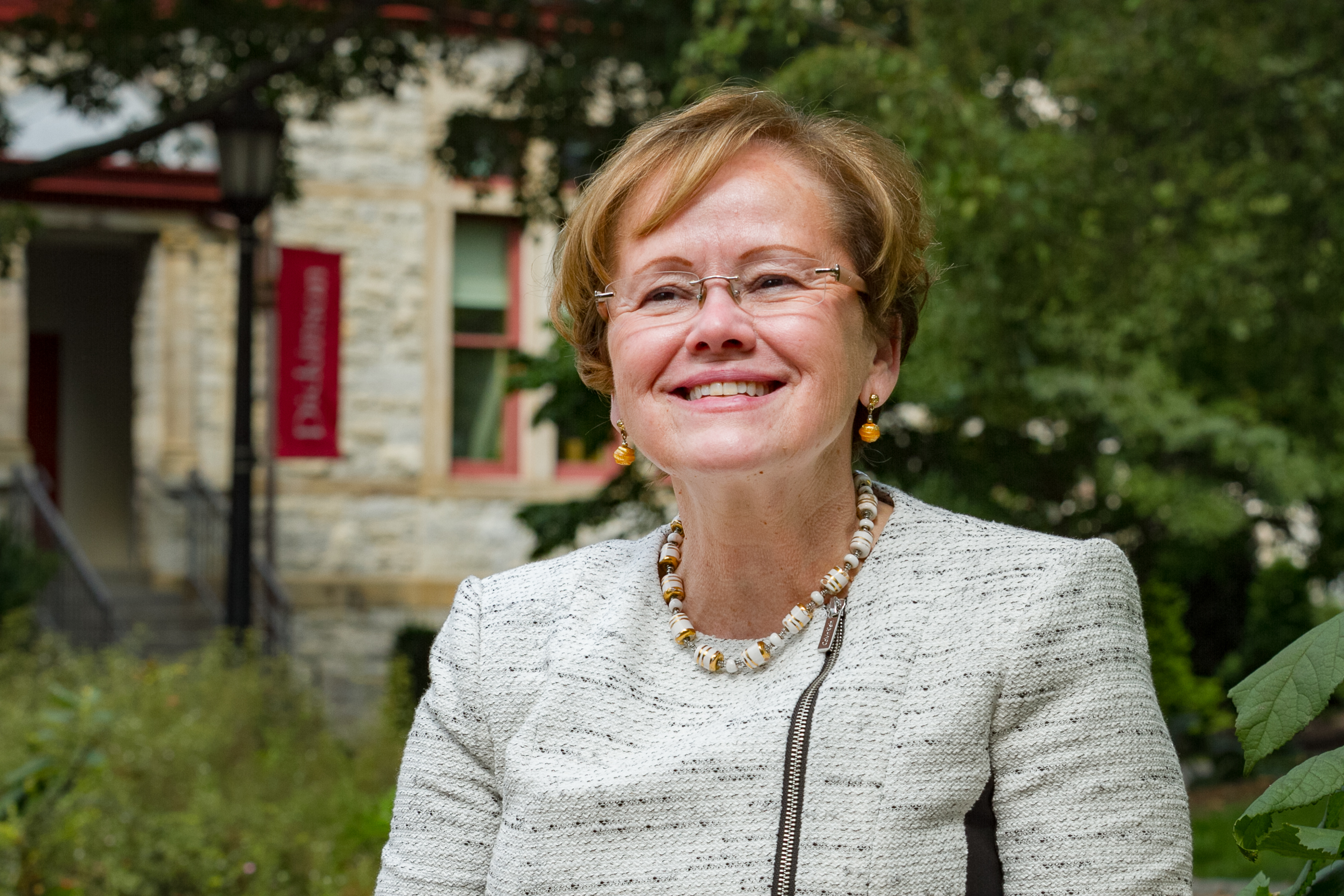Diversity and Inclusivity

Photo by Carl Socolow '77.
by Margee Ensign, President
I believe that one of the key purposes of Dickinson’s liberal-arts education is to open minds and prepare our students to live larger, fuller lives.
When I refer to “opening the mind,” I mean to all sorts of things: To music. To science. To arts and athletics. To philosophy. To Chinese literature and microbiology and statistics and organic farming. That’s what makes a liberal-arts college different from a professional school. It is our mission, and we are passionate about it.
Part of the way we perform that mission is by bringing to campus students, faculty and staff of very different backgrounds and life experiences. We work to create a community as diverse as the world. When Dickinson was founded, it was not a very diverse place; it was male, white, relatively affluent and Protestant Christian. Everyone had somewhat similar life experiences—and hence similar ideas—and held the same prejudices and preconceptions.
Today, Dickinson recruits students from across the country and internationally. We make sure that we include students who belong to groups that have been previously marginalized
in our society. We do this not in service to political correctness. We do it directly in service to our mission—to open minds.
Dickinson has worked hard to create a more diverse institution, particularly in the last decade. Currently, 14 percent of our students are international and 21 percent are domestic
students of color. In 2009, those percentages were 6 and 14, respectively. Our students come from 38 states and territories and 49 foreign countries. We continue to make Dickinson an even more diverse place.
For many students, Dickinson may be their first introduction to living and learning in a diverse environment. Suddenly they are elbow to elbow with people who are very different from them, who have views that differ from their own. Just bringing a diverse campus together does not automatically result in a harmonious, conflict-free community—or even in learning from one another. How could it? The possibilities for misunderstandings and miscommunications are endless.
So what is to be done?
At Dickinson, we seek to forge a living-learning community that is inclusive—where everyone feels welcome and all voices are heard. We have instituted a number of programs, including an array of intercultural trainings and development opportunities for students, faculty and staff. We have established the Office of Institutional Effectiveness & Inclusivity led by a vice president and tasked with advancing the college’s mission to build and maintain a diverse and inclusive community committed to equity. We are working to further diversify our employees and offer programming like inclusive pedagogy workshops for faculty and Campus Inclusion Week activities for the entire community. We have in the last decade enhanced the diversity of our curricular offerings, adding majors in Africana studies and Latin American, Latino & Caribbean studies and a new faculty position in Native American studies. In 2014 we revised our U.S. Diversity requirement to better equip students to engage a complex, diverse world.
But even with all that, we know we are not finished. We recognize that there are still those on our campus who feel like they don’t have a voice, or that they aren’t as valued and respected as their peers. We must work harder to hear and work with people who have been marginalized.
And each year brings yet another incoming class of students, each with a unique set of experiences and preconceived ideas. We are committed to welcoming everyone to a campus where we can share our norms of inclusivity and teach the skills necessary to live successfully in a diverse community. It requires patience. It requires hard work. It will not always be successful. But we will continue to focus on building an inclusive community, and we look to you, our alumni and parents, to find ways to help share your experience and expertise to help our community continue to grow and strengthen.
Read more from the spring 2019 issue of Dickinson Magazine.
TAKE THE NEXT STEPS
Published May 10, 2019